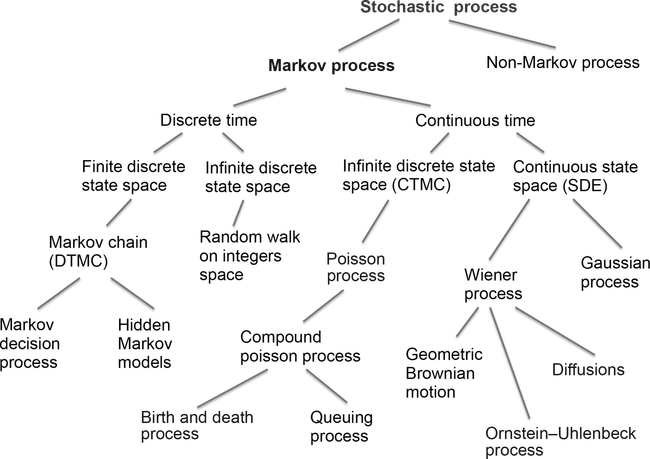Introduction
In the realm of decision-making, the concept of stochastic processes holds significant relevance. Stochastic processes refer to random sequences of events or phenomena that evolve over time. This mental model explores how our understanding of these processes is anchored in human psychology and its prevalence in our day-to-day lives. By grasping the fundamentals of stochastic processes and recognizing their influence, we can make more informed decisions and avoid falling into the trap of irrationality.
The Relevance of Stochastic Processes in Decision-Making
Stochastic processes play a crucial role in decision-making as they reflect the inherent uncertainty and randomness of the world. Understanding the characteristics and implications of these processes is essential for making rational choices. Here are a few examples of how stochastic processes manifest in different contexts:
- Personal Life Decisions: Consider an individual deciding whether to invest in the stock market or save their money in a bank. The stock market’s performance is influenced by various stochastic processes, such as market fluctuations, economic trends, and unpredictable events. Failing to consider the stochastic nature of investments may lead individuals to make irrational decisions, such as chasing short-term gains or succumbing to fear during market downturns.
- Business Scenarios: Stochastic processes are prevalent in business environments, particularly when it comes to market demand and customer behavior. For example, a company might rely on historical sales data to forecast future demand. However, this approach overlooks the stochastic nature of customer preferences and external factors. If the company fails to account for these uncertainties, they may overproduce or underproduce goods, leading to financial losses or missed opportunities.
- Public Policy-Making: Stochastic processes are also relevant in public policy-making. For instance, when creating policies to address unemployment, decision-makers must consider the unpredictable nature of economic fluctuations and job market dynamics. Ignoring the stochastic nature of these processes can result in ineffective policies that fail to respond to changing circumstances and socioeconomic factors.
The Influence of Mental Biases on Stochastic Processes
Several cognitive biases contribute to our understanding of stochastic processes and can lead to irrational decision-making:
- Anchoring Bias: The anchoring bias occurs when individuals rely heavily on initial information or reference points when making decisions. In the context of stochastic processes, this bias can manifest when people anchor their expectations on past outcomes or fixed beliefs, neglecting the inherent randomness and potential for change.
- Availability Bias: The availability bias leads individuals to make judgments based on readily available information that comes to mind. When considering stochastic processes, people may overestimate the likelihood of events based on vivid or memorable instances, failing to account for the random nature of the overall process.
- Overconfidence Bias: Overconfidence bias arises when individuals believe they have more control or knowledge over stochastic processes than they actually do. This bias can lead to unwarranted risk-taking or underestimating the uncertainty associated with decision outcomes.
Strategies for Avoiding Stochastic Processes Fallacies
To avoid the pitfalls of irrational decision-making influenced by stochastic processes, consider the following strategies:
- Embrace Probabilistic Thinking: Recognize and accept the stochastic nature of processes and decisions. Embrace probabilistic thinking by evaluating various possible outcomes and their associated probabilities. This approach fosters a more realistic and objective understanding of uncertainties.
- Gather Diverse Information: Avoid relying solely on a limited set of data or experiences. Seek out diverse sources of information to develop a more comprehensive understanding of stochastic processes and their potential outcomes. This broader perspective enhances decision-making by reducing biases and increasing awareness of uncertainties.
- Incorporate Scenario Analysis: Instead of relying on a single deterministic forecast, consider scenario analysis that accounts for a range of potential outcomes. This approach helps to uncover the potential impact of different stochastic processes and enables decision-makers to prepare for various contingencies.
- Regularly Update and Adjust: Stochastic processes are dynamic and subject to change. Continuously review and update your assumptions and decisions based on new information and feedback. Flexibility and adaptability are key when navigating stochastic processes.
Conclusion
Stochastic processes are fundamental to decision-making, encompassing the unpredictability and randomness inherent in various aspects of our lives. By understanding the nature of stochastic processes and the biases that can cloud our judgment, we can make more informed and rational choices. Embracing probabilistic thinking, gathering diverse information, and incorporating scenario analysis empower us to navigate uncertainties effectively. Awareness of the presence and impact of stochastic processes allows us to approach decision-making with clarity and objectivity, enabling better outcomes and avoiding the pitfalls of irrationality.
